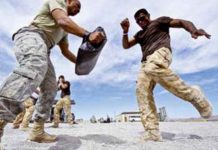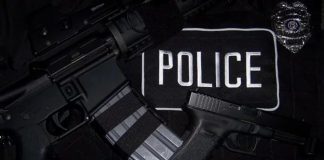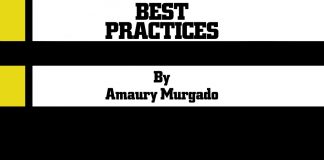We want to introduce the ActionFlex police safety batons that will improve law and security enforcement officer training.
Security and law enforcement personnel have long had numerous baton training programs befitting the times, culture, trends and the ever increasing human rights factor. These training programs and refresher courses are mandatory annually. In today’s global society with its humanitarian ways, law and security enforcement officers can not inflict cruel or unusual punishment on a citizen or suspect. The repercussions of doing so are inevitable and very costly to the agency when enforcing that country’s particular laws and interests.
Laws change frequently and therefore what was once proper and viable has now become taboo and deemed too dangerous. With science and technology entering the picture, training has had to change their methods as to not harm nor infringe on the rights of its citizens.
As new methods and materials are discovered they are being added into everyday life. These new found avenues have produced devises such as DNA testing and Taser guns, which help promote a safer environment ensuring a speedier conclusion to the situation. Even though the security officer has many of these new technological advances at his side, it is still of the utmost importance that each officer personally understands a system of self defense to employ as a “back up” to any altercation an officer might encounter.
It is well documented that any object can be a possible weapon inflicting pain, paralysis or even death in its usage. Given this factor, it is the responsibility of security and law enforcement agencies to train their officers in the usage and manipulation of the age-old police baton which has always been used as a defensive bridge between the officer and suspect. It would be detrimental to officers and the citizens they protect to be ignorant of the correct usage of a police baton and its applications.
Using new age combative weaponry, security and law enforcement agencies are now able to effectively train their personnel at a faster and safer rate by utilizing world renown ActionFlex Police Safety Batons and the unique, concise training programs accompanying them. The following training programs will establish a strong, knowledgeable and immediate understanding of close quarter offensive and defensive weapon applications and tactics.
The ActionFlex system is based on training scenarios taken directly from the Japanese National Police Force. Their training and understanding of close quarter combat and defensive tactics are well documented and known throughout the world as top notch training programs which include a strong martial arts influence. This same training program has been successfully used by security and law enforcement agencies throughout the United States.
ActionFlex Police Batons and training systems are used to hone the trainee’s physical and mental capabilities so that reaction time is diminished. In other words, trainees will learn the basics…the What, Why, When, Where and How to correctly and safely subdue a perpetrator or combative citizen.
ActionFlex intensive two-day police baton training courses instruct trainees on how to handle the police baton effectively utilizing the “Basic 8” system. This “Basic 8” system also helps promote rote memory and teaches one to remain within the laws of striking and detaining. The Basic 8’s simple instructions contain how to strike, block, stances, posture, manipulation drills, combative scenarios, technique training, takedowns, submission holds and correct breathing methods.
Basic 8 Strike Areas and Patterns:
These 8 striking patterns can be readily learned, duplicated and adopted very easily. Patterns all follow a natural upward, downward, diagonal and horizontal direction when striking a target with either the right, left or both hands. To simplify this even more, target areas are set up mirroring the face and hands of a clock. This is done for easy reference especially within the international community where vague explanations could pose a threat and undermine the trainees understanding.
Even though there are 8 basic striking patterns, these can be broken down into many sub-patterns to accommodate that particular agencies views and laws on excessive force. In many instances law enforcement agencies can only strike a blow to the legs which might be the only area deemed legal. When physical striking is not permitted at all, or only to areas such as the hand, passive techniques such as arm locks, submission holds and take downs become necessary.
Example 1) upper shoulders and neck, upper extremities (arms), lower extremities (legs), head and center mass thrust.
Basic 8” Stances:
These stances are common and are used in many systems of self-defense. They are simple to understand, learn and teach. They work extremely well under duress and pressure when subduing combative people. Out of the basic 8 stances three main ones are constantly used while the others are learned so one can easily transition from one movement to another without telegraphing.
Example 2) center stance left and right, upper stance left and right, lower stance left and right, front stance both hands lower, middle upper.
Basic 8 Blocks:
As a security or law enforcement trainee it is equally as important to know defensive techniques as well as offensive. There are 8 general areas to be studied using either an upward, downward, diagonal or horizontal block with right, left or both hands. These blocking patterns cover and protect the body in a very direct manner thus allowing the officer to counter an attack. This is especially true in an altercation where the officer must first be placed in a defensive mode and threatened before they can legally strike. In other words, the officer must not be the initial aggressor.
These blocks work well with both hands but can also be used as a deflection when only incorporating one hand for blocking. These blocking techniques can also be broken down into sub-sections for trainees who have to learn at a different pace due to age, physical agility, legal restrictions and/or cultural influences.
Example 3) horizontal upper, middle, lower 12 to 6, diagonal upper, middle, lower 1 to 7 and 7 to 1, diagonal upper, middle, lower 11 to 5 and 5 to 11, vertical left, center, right 9 to 3 and 3 to 9.
Basic 8 Striking and Blocking Drills.
These striking and blocking drills will set your body’s muscle memory thus establishing a strong easy to use foundation both offensively and defensively while learning how to effectively move into and out of the target area. In real life scenarios, these drills reduce the possibility of becoming injured in an altercation or when subduing a suspect. It is well documented that these drills help the trainee recognize and act upon the speed and power that an offensive weapon could produce.
Striking and blocking drills help train security personnel to gauge the distance between them and the suspect. They also provide a good perception of timing and rhythm. These drills help the trainee to understand and establish basic offensive and defensive movements which enables them to effectively neutralize a situation without telegraphing one’s thoughts and intentions while still maintaining a strong demeanor. Working correctly and efficiently produces less fatigue.
Example 6) patterns: head arms, legs…. head arms, legs….. thrust, arms, legs
Basic 8 Second Close Quarter Combat Scenarios.
These true to life scenarios depict the rigors of the street. They show the trainee can be cautious but also explosive, when subduing an individual in the shortest amount of time. On the street time is of the essence and is one of the main factors a trainee needs to fully understand. This is particularly true when an officer might have to exert force on two or more combative suspects with the least expenditure of energy. A well-trained officer can subdue and control more than one combative suspect during the same period.
Example 7)
Basic 8 Defensive Techniques:
When local laws are written stating that security or law enforcement personnel must be placed into a defensive situation or harms way before they can counter attack this defensive training becomes of prime importance.
Learned defense and counter attack training techniques allow the trainee to fully understand economy of motion when being physically threatened.
It is well documented that “the best block is no block at all”. Rather than blocking a strike “straight on” and being subjected to possible injury from pressure, speed and strength of the oncoming strike it is deemed wiser to move out of the way and side step the strike while using the baton to jam up the suspect’s strike. This successfully alters the direction of the attack and redirects the oncoming strike thus keeping any connecting body strikes and injuries to a minimum.
Due to extensive laws presently in force throughout the world each government has independently deemed what is to be politically correct for their agencies as to the mode of force to be exerted to its population. One government might adhere to striking only the upper leg regions whereas another government agency will allow force to be executed to the entire body.
Strikes to the target are generally directed to the upper, middle or lower parts of the body.
Upper: head, neck and shoulders.
Middle: arms, hands and torso.
Lower: pelvis, legs and feet.
Example 4) Right Hand techniques:
Technique #1:
Move backward allowing the attacker’s weapon to pass in front of you without connection. Immediately step forward into the target and counter strike the combative person.
Technique #2:
Move to the right allowing the attacker’s weapon to pass to your left doing no harm. Immediately step forward into the target and counter strike.
Technique #3:
Move to the left allowing the attacker’s weapon to pass to your right doing no harm. Immediately step forward into the target and counter strike.
Technique #4:
Move forward into the target area extending the baton outward and upward thus neutralizing the strike by jamming the attacker’s weapon and counter strike.
Left Hand techniques:
Technique #1:
Move backward allowing the attacker’s weapon to pass in front of you without connection. Immediately step forward into the target and counter strike the combative person.
Technique #2:
Move to the left allowing the attacker’s weapon to pass to your right doing no harm. Immediately step forward into the target and counter strike.
Technique #3:
Move to the right allowing the attacker’s weapon to pass to your left doing no harm. Immediately step forward into the target and counter strike.
Technique #4:
Move forward into the target area extending the baton outward and upward thus neutralizing the strike by jamming the attacker’s weapon and counter strike.
Basic 8 Takedown and Submission Scenarios.
At your training academy you will find that when practicing takedowns and submissions on fellow officers it is often performed at a slower learning speed and without very much resistance given from your partner. In real life street scenarios the execution of a takedown on a combative individual is totally different, and, of course, far more dangerous than the encounters experienced at the academy. Thus, the following examples of take downs will assist any trainee/officer when having to subdue a combative person even when they might by far out number or out weigh the officer.
Note: Even though the police baton offers an excellent way of subduing a person, many training scenarios are based on striking an individual then incorporating submission techniques that are designed for that particular department/agency.
For the officer to fully understand any type of physical takedown through baton usage and joint manipulation he must first be aware and appreciate mechanical control, leverage and angles and how they all work with one another. To the hyped individual adrenaline flows could block much of what we refer to as pain. In this condition the brain has not connected with the muscle. Consequently the use of joint manipulation by the officer during a take down is better accomplished by creating an off balancing of the suspect. It is not to say, that creating a sufficient amount of pain isn’t advantageous because it is, but you cannot rely on it to totally control an aggressor.
Your department knows well enough what techniques are permitted for its population. These following examples of submissions and takedowns will center mainly on the individuals wrist, arm and shoulders.
Technique #1 Overhead Attack:
The attacker strikes in a downward fashion as the defendant enters left in a triangular fashion to avoid the attackers right downward strike placing themselves on the outside of the attackers strike and alongside the attackers side of his body. The defendant is required to do three things at one time. Number 1: is to enter the left triangle, number 2: parry and number 3: strike using the left hand and then thrust the tip of the baton into the attacker’s sternum. Have done that the defender then brings his baton over the top of the attackers striking limb and pins it to his chest thus isolating attackers limb using both of his hands to control both sides of baton, at this point the defendant quickly reaches up and grabs attackers right wrist with left hand and weaves his right elbow over the top of attackers bent elbow keeping his arm bent until attacker spins around exposing his back to defender and then having your baton in your right hand you bring it around attackers left carotid artery and subdue the suspect.
Technique #2 Downward Diagonal Attack:
The attacker swings in a hooking fashion, defender swings in like a rust gate stacking his shoulders and hips i.e., moving with his center making sure the upper torso moves with the hips while simultaneously blocking and striking with the left hand and then grabbing limb at the same time you block and striking the brachial plexus of the attacker with your right hand which is holding the baton. You then bring your right arm behind attackers elbow and shock elbow by pushing (blocking his with right and with left hand and pushing toward yourself with your right forearm, which is holding the baton. You then drive the butt of baton into attackers back of elbow and push up with your wrist toward the bend of his elbow and at this time you place the butt of the baton over the under side of his wrist and perform niho nage or second directional throw. Two points of concern it is very important that with the initial dislocating of elbow mentioned above that you drive your right shoulder into his right inner shoulder. This will aid you in dislocating elbow by helping to isolate and restrict his movement and point number two is when doing the actual niho hage it needs to be at a 45 degree angle to attacker’s rear.
Technique #3 Straight Thrust to Midsection:
Attacker thrust straight to stomach. Defender must enter left triangle while simultaneously parrying strike with wrist with left hand while coming over the top of attacker’s burd of aim with right. You then raise attackers elbow higher than his shoulder by pushing biracial on the wrist towards his rear with left hand and up into his bent elbow with right will be to you at this point to take his weapon and stomp the back of his knee causing him to crash to the ground and subdue further if required.
Technique #4 Frontal Strike to Body:
Attacker strikes overhead and or into the front in a downward fashion. Defender enters left triangle while simultaneously parrying attackers strike with his left hand and thrusting tip of baton into his sternum and then collapsing attackers arm to your chest using your body as a base in which to isolate attacking limb. You will grab the attacker’s baton with left hand while coming over the top of his bent elbow with your right elbow but you choose to push the attacker away instead by placing an extreme amount of pressure on his shoulder thus requiring that you don’t complete syaku moki kumi but displace opponent.
Basic Breathe Control:
Correct breathing techniques are extremely essential when subduing a combative individual or individuals. An out of breath officer is a detriment to a safe and completed capture. One must breathe accordingly for the physical situation or ordeal. If one becomes fatigued during an altercation the outcome could be much different than as planned or wanted. An officer must employ breathe control by utilizing basic vocal commands such as… Stop, No, On the Ground, Drop it Now, Get Down, Hands Up, Don’t Move or Get Back. These verbalized commands vary from agency and/or department. This “voice of authority” puts mental pressure on the perpetrator while at the same time insures that your body absorbs more oxygen and thus gives extra strength and clearer mental agility. This is why your breathe control is so important.
Conclusion:
The ActionFlex Police Safety Batons and their application will work for all security, law enforcement agencies, government departments and varied cultures. They can be incorporated into any private or governmental agencies, department regulations and laws or used as an additional free standing learning and training program. Your department/agency will most certainly will want to embrace this concept of safe training methods in today’s litigious world. ActionFlex Police Safety Batons were designed for that purpose.
Endorsements
Dana Abbott’s ability to integrate ancient Samurai combat training into modern defensive tactics is amazing in its practicality, street effectiveness and ease at which it can be learned and applied. Many of his techniques have been incorporated into the iCAT™ training system as well as our Tactical Defense Training™ for our law enforcement, SWAT, and counter-terrorist programs.” Richard Ryan Founder, Dynamic Combat Method™, Tactical Defense Training, Inc.
“Having taught the PR-24 and the police riot baton for ten years I was surprised to find that what you teach in the tactical impact weapons course is frighteningly simple and effective. I plan to do more training in the future with the baton and the tactical knife.” B. Martell, DT Instructor
“Very practical and effective weapons training. Some systems get lost in too many techniques but yours uses a building block approach to learning which makes it easier to remember and apply. Very practical and effective!” S. Billings, Drug Enforcement Agency
“Thank you for the great training. I know your baton impact weapons demonstration opened some eyes in our department to how dangerous a person trained in Tactical Weapons can be.” Officer D. Stansfield, Kansas City Police Department, Patrol and Field Training Unit
“Extremely applicable. Especially realistic as opposed to past training. Finally we have a system that fits in with military procedure. T. Urso U.S. Marines Quantico, Va.
“Excellent. Very applicable to officer survival in the field. This is the most realistic training in defensive tactics I have ever received.” W. D. Murphy, Defensive Tactics Instructor, Department of Public
“Excellent real-world training. Very applicable for our security officers. Traditional baton training is frequently low speed and unrealistic. P. Campos, American Embassy, Lima Safety
“Very practical for street officers who don’t spend as much time as they should training for violent encounters. This system seems more natural than other systems and applies directly to the most dangerous situations officers may face.” S. Brooks, Tactical Officer, Mohave County Sheriff’s Department
“As well as being a police officer I’ve studied Karate for five years and I now understand that almost everything I learned in the past is too complicated. Your system is simple but effective. That’s a combination that’s hard to beat.” G. Clark, Defensive Tactics Instructor, Casa Grande Police Department
“Very effective! The first system I’ve seen that is truly realistic and applicable for a federal officer on the street. It’s about time!” E. Wacker, FBI
“An excellent defensive system. Much more realistic with better techniques than previous systems.” Deputy G. A. Heine, Maricopa County Sheriff’s Department
Your programs are well thought out and presented in an orderly sequence. Everything was applicable to worst case scenarios as well as the more mundane situations officers face on a daily basis.” Detective D. Duhigg, Mesa Police Department
“Very useful, practical techniques. What I liked most was the repeatable progression that Mr. Abbott used to build on natural reactions and the techniques seem to build off what we would do naturally, hence you need less practice to remain proficient.” Sgt. M. Bellows, Mesa Police Department
“This is an excellent system based on our natural tendencies in a confrontation. I think it is the perfect system for police officers because of its simplicity and effectiveness. I also liked the basic 8 approach, which makes it easy to learn and apply.” B. Ragsdave, Detective, Phoenix Police Department
“Having studied the Filipino arts I wasn’t sure what to expect from your seminar but I have to say that what I learned was very effective and changed my point of view on the sudden death aspects of weapons training. I was amazed at how fast your attacks were and liked the emphasis on ending the fight immediately. Your Tactical Weapons Training is very effective and very deadly.” D. Polynihi, Escrima Instructor
 To find out more about Shihan Dana Abbott and the study of the Japanese sword on LearnTheSword.com visit his listing on the Martial Arts Schools & Businesses Directory by clicking on the image on the left.
To find out more about Shihan Dana Abbott and the study of the Japanese sword on LearnTheSword.com visit his listing on the Martial Arts Schools & Businesses Directory by clicking on the image on the left.







